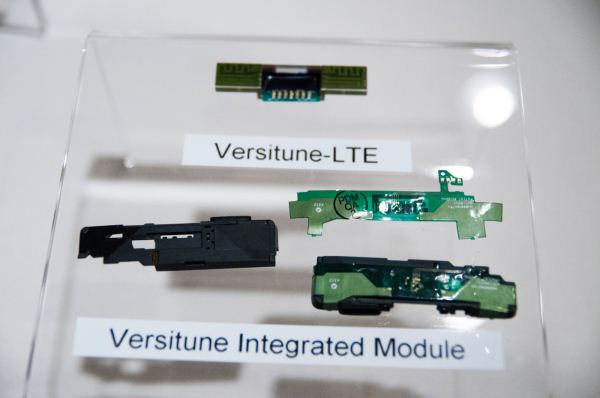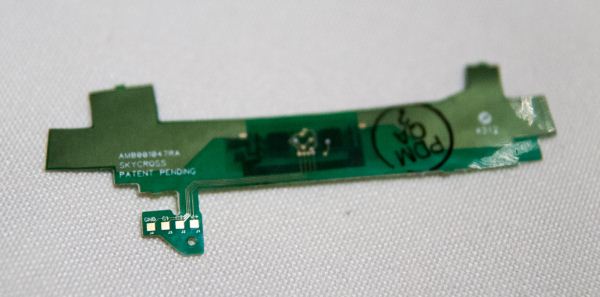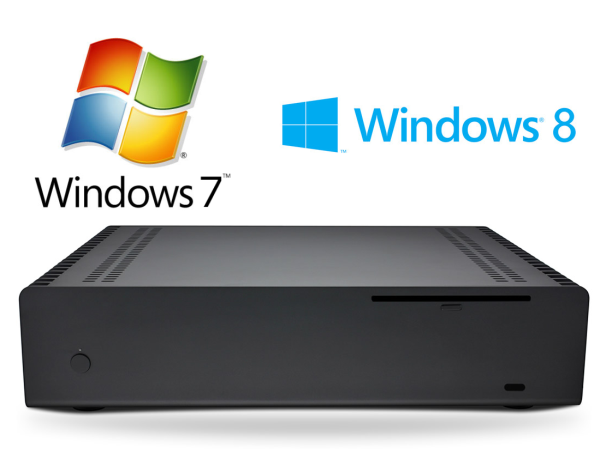AnandTech Article Channel |
| A Look at SkyCross and their Actively Tuned VersiTune Smartphone Antenna Posted: 20 Jan 2013 06:05 PM PST On the last day of CES, while still getting over some of the death curry that we foolishly ingested the night before, I had a meeting with SkyCross, who recently announced a new actively tuned multiband antenna module for smartphones. With LTE, the demand for more and more bands on a smartphone has and will continue to increase, which has at present driven OEMs to simply include more antennas, each tailored for a specific frequency. Remember that the geometry of an antenna defines its radiative properties and resonant frequency, which in turn affects gain at different frequencies. At present I’ve seen smartphones with as many as four or five antennas, which poses considerable challenge for engineering a device, as number of antennas and their placement is often in direct competition with industrial design and other considerations. Actively tuned antennas aren’t anything new for antennas in other RF applications, but they are a relatively new thing in the smartphone and tablet space. In the past that was primarily because it was easy enough to tune a design to the handful of bands the handset was designed for. The challenge of getting an antenna with the right impedance increases when we’re talking about a wider frequency range, hence the move to either more passive antennas for more bands or an actively tuned array. To date the only smartphone I’m aware of that has an active tuning block other than what you get on the power amplifiers to match a standard 50 Ohm smartphone antenna is the iPhone 5, which has an RFMD RF1102 tuner. Of course that design only has two cellular antennas to accommodate a bunch of bands, and the active tuning there also further mitigates deathgrip, which is itself just detuning. By antenna tuning I’m referring to the ability of some part of the RF front end to actively switch in the right amount of complex impedance and match the antenna to the transmission line in the device. In the case of most applications this means switching in some capacitors using a switch or a bunch of relays and getting as close to a VSWR (Voltage Standing Wave Ratio) of 1.0 as possible. Without going on a big long discussion about SWR and VSWR, the naive explanation is that VSWR is one of the figures of merit that defines how well an antenna can radiate, and thus having good VSWR means the antenna radiates more of the power delivered to it, rather than reflecting it back into the transmission line. The trend in smartphone antenna design is something I’ve noted in a handful of reviews — often there’s a plastic module at the bottom of the phone with the speaker, microphone, and antenna. This is modular so the OEM can then include the right primary antenna for the right region and set of bands the phone is destined to. Look at almost any major design and you’ll see something along those lines for the primary receive and transmit antenna at the bottom. What SkyCross is offering is the ability for OEMs to bring this plastic module to them, along with the set of bands they require, and have a single custom design tailored to their application and all the bands. They also claim to have very good (low) correlation coefficients between the two antennas on their modules, even though there isn’t much separation distance between them. Getting low correlation between the two antennas is critical for getting good gains out of MIMO (like the 2x2 MIMO in LTE) and receive diversity. The end result is a smaller solution with fewer constraints on industrial design, and possibly even better correlation coefficients for even better MIMO. SkyCross showed off an example design and module, which had two switches visible on it along with one other package. At the bottom you can see four feed points — one for ground, two for the two antennas, and finally a voltage rail for the active components. These can then accommodate the multiple frequency bands though tuning to the appropriate configuration. I’m told that modules such as these will start popping up in smartphones in 2013. Source: SkyCross
|
| Getting the Best out of an Ivy Bridge HTPC: Windows 8, madVR and More.. Posted: 20 Jan 2013 11:00 AM PST The build process and thermal performance of a fanless Ivy Bridge HTPC was covered in detail last month. I had indicated that the piece would be the first of a three-part HTPC series. Today, we are looking at the second part of the series. My original intention was to present the HTPC oriented benchmarks and aspects of the PC as it was built in the first part. After a few experiments, we had to do some updates to the build in terms of both hardware and software (OS). Is Windows 8 a worthy upgrade for HTPC users? The second part of our HTPC series addresses that question and also provides some guidance to ensure that your Ivy Bridge HTPC performs to its full potential.
|
| You are subscribed to email updates from AnandTech To stop receiving these emails, you may unsubscribe now. | Email delivery powered by Google |
| Google Inc., 20 West Kinzie, Chicago IL USA 60610 | |











No comments:
Post a Comment